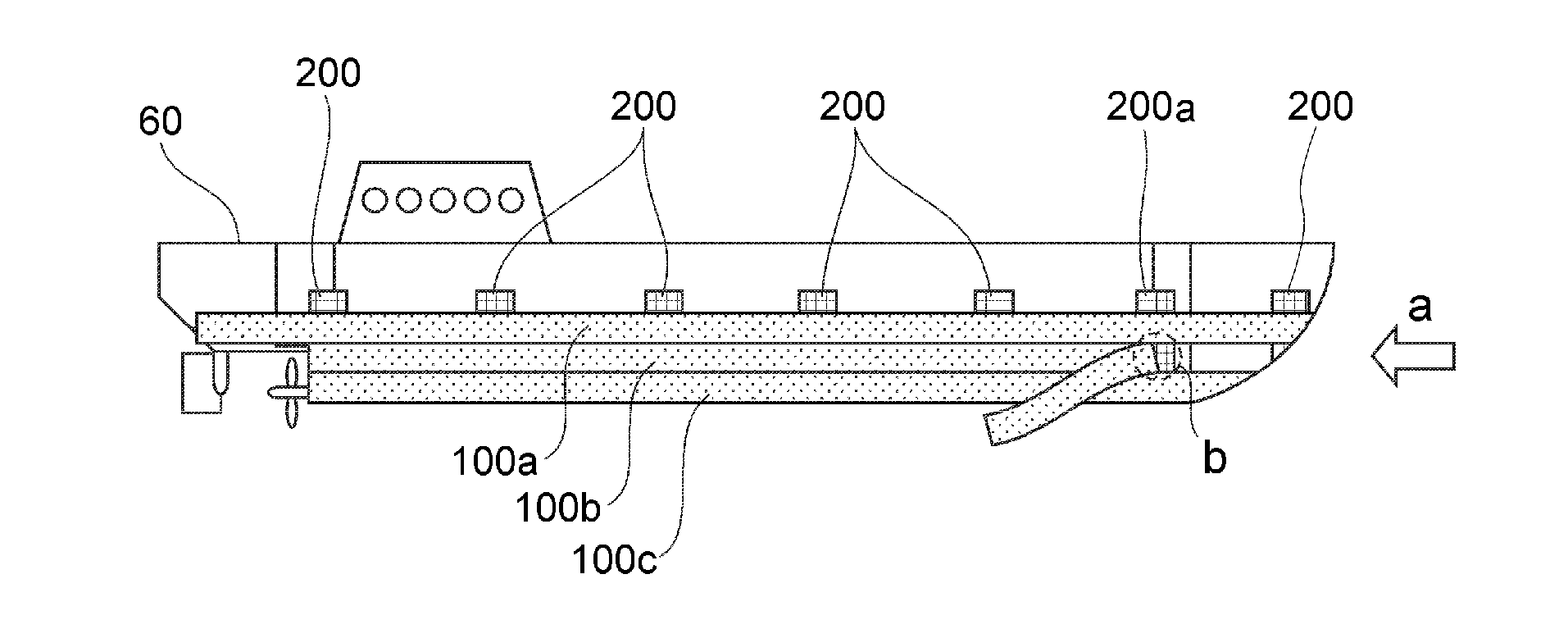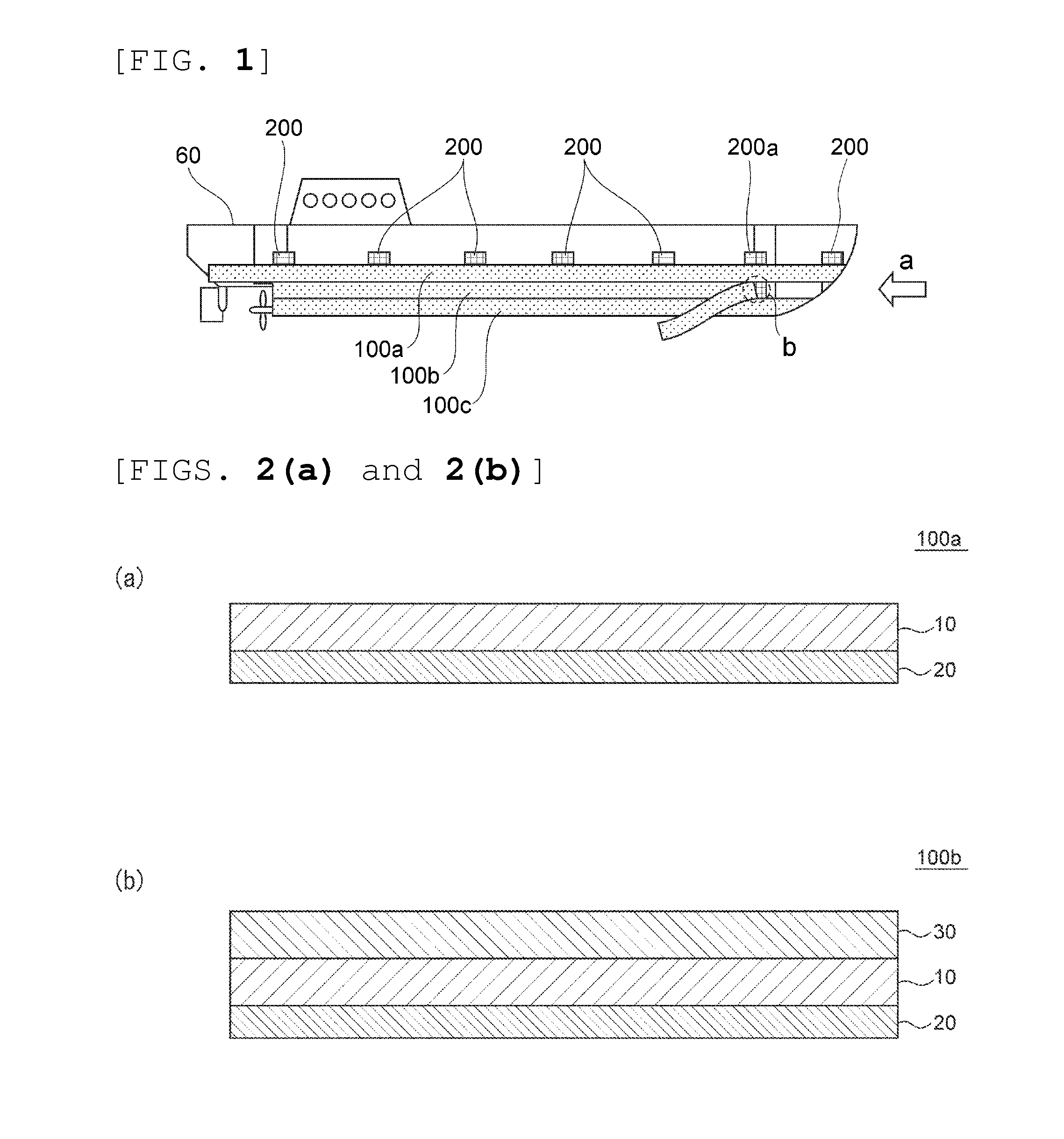Method for preventing fouling
a technology of fouling and organic solvent, applied in the field of preventing fouling, can solve the problems of affecting the work environment or the surrounding environment, affecting the work environment, and consuming a lot of labor and time, and achieve the effect of poor workability
- Summary
- Abstract
- Description
- Claims
- Application Information
AI Technical Summary
Benefits of technology
Problems solved by technology
Method used
Image
Examples
first embodiment
[0050]The method of preventing fouling of a structure according to the first embodiment of the present invention includes the following steps:
(step 1) preparing an antifouling pressure-sensitive adhesive tape including a base material layer (A) and a pressure-sensitive adhesive layer (A) formed on one surface side thereof, and an easily adhering pressure-sensitive adhesive tape including a base material layer (B) having one surface easily adhering to the pressure-sensitive adhesive layer (A) and a pressure-sensitive adhesive layer (B) formed on the other surface side thereof; and
(step 2a-1) bonding the easily adhering pressure-sensitive adhesive tape onto a surface of a structure to be prevented from being fouled, and
(step 2a-2) bonding the antifouling pressure-sensitive adhesive tape onto the bonded easily adhering pressure-sensitive adhesive tape so that lengthwise directions thereof are non-parallel with each other. According to such method of preventing fouling, the falling of t...
second embodiment
[0109]The method of preventing fouling of a structure according to the second embodiment of the present invention includes the following steps:
(step 1) preparing an antifouling pressure-sensitive adhesive tape including a base material layer (A) and a pressure-sensitive adhesive layer (A) formed on one surface side thereof, and an easily adhering pressure-sensitive adhesive tape including a base material layer (B) having one surface easily adhering to the pressure-sensitive adhesive layer (A) and a pressure-sensitive adhesive layer (B) formed on the other surface side thereof; and
(step 2b) bonding the two or more antifouling pressure-sensitive adhesive tapes and the at least one easily adhering pressure-sensitive adhesive tape onto a surface of a structure to be prevented from being fouled so that the antifouling pressure-sensitive adhesive tapes are prevented from overlapping each other and a junction therebetween is on a surface of the base material layer (B) of the easily adherin...
examples
[0132]The present invention is described below by way of Examples. However, the present invention is not limited thereto.
PUM
| Property | Measurement | Unit |
|---|---|---|
| thickness | aaaaa | aaaaa |
| elongation | aaaaa | aaaaa |
| elongation | aaaaa | aaaaa |
Abstract
Description
Claims
Application Information
 Login to View More
Login to View More - R&D
- Intellectual Property
- Life Sciences
- Materials
- Tech Scout
- Unparalleled Data Quality
- Higher Quality Content
- 60% Fewer Hallucinations
Browse by: Latest US Patents, China's latest patents, Technical Efficacy Thesaurus, Application Domain, Technology Topic, Popular Technical Reports.
© 2025 PatSnap. All rights reserved.Legal|Privacy policy|Modern Slavery Act Transparency Statement|Sitemap|About US| Contact US: help@patsnap.com



